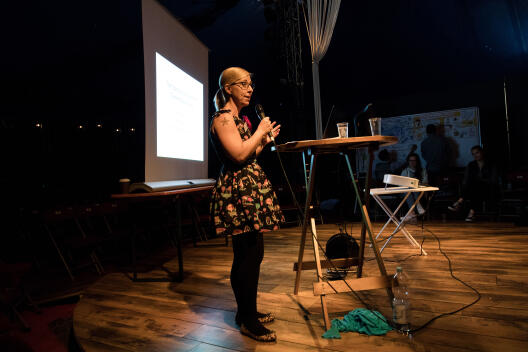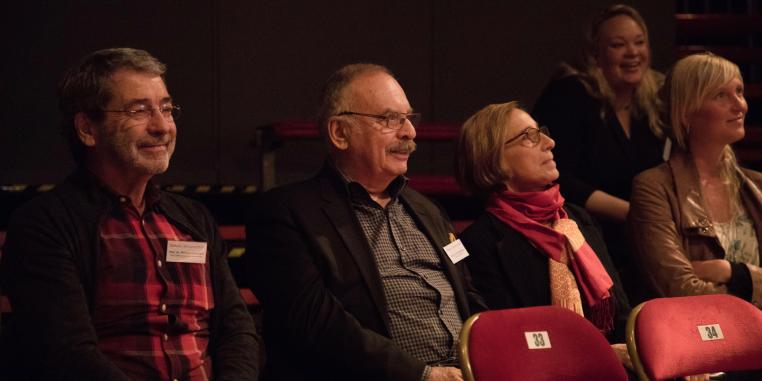
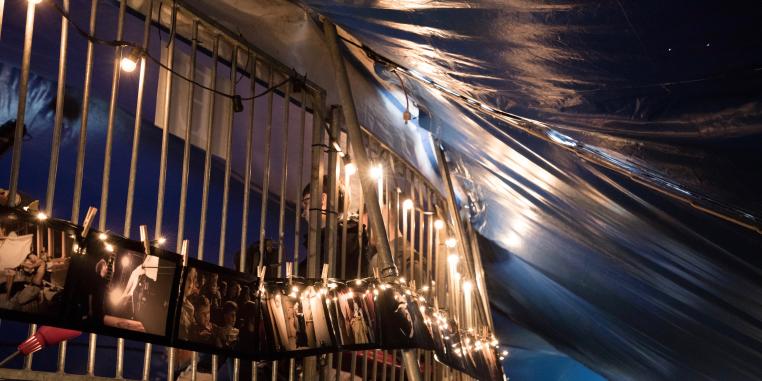
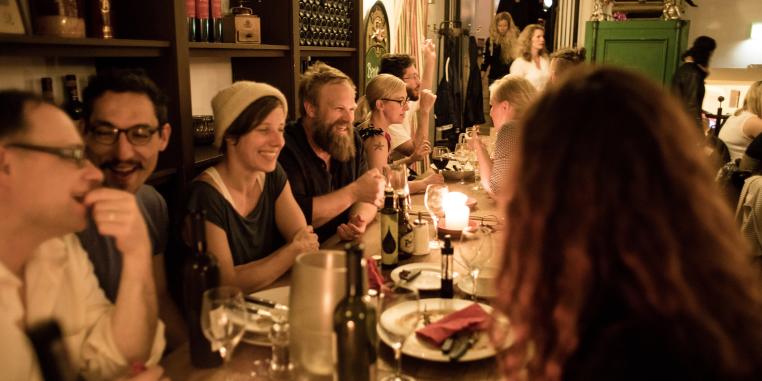



This paper considers how circus sets up a cultural space with its moods and in collaboration with music. Perhaps mood is not what comes immediately to mind for circus but it can be argued that the aestheticized space of circus sets and resets mood in each act and throughout the show. Through a variation in the program and the music, the circus show re-establishes an overall mood and it deviates from the cheerful mood most noticeably with an aerial act that conveys poignancy. While staging a cheerful mood has been fundamental to the success of traditional circus, recent circus and its music offer a far wider range of moods including that of melancholy. Such moods create connections to recent political spaces within culture.
Mood is considered to be an intangible quality that is neither focused nor directed, but it can be perceived in its aesthetic production. Jonathan Flatley identifies a type of aesthetic mood in which it is possible to recognize the elements that produce mood before it evaporates, and it is the process of trying to hold onto that elusive quality after it goes that becomes a feature of mood. The paper encompasses the productions of Circus Oz and Cirque du Soleil in its analysis of circus nostalgia in Cirque 1903, cheerful exuberance in Cirque de la Symphonie and melancholic sadness and anguish in Circa’s Il Ritorno
Prof. Dr. Peta Tait is a professor of theatre and drama at La Trobe University, Australia; she is an academic and a playwright and is a Fellow of the Australian Academy of the Humanities. She has written over 60 scholarly articles and chapters and her recent books include: Fighting Nature: Travelling Menageries, Animal Acts and War Shows (Sydney University Press 2016); the co-edited The Routledge Circus Studies Reader (Routledge 2016); Wild and Dangerous Performances: Animals, Emotions, Circus (Palgrave MacMillan 2012); Circus Bodies (Routledge 2005); Performing Emotions (Ashgate 2002). She is currently writing on emotion and affect in performance. Her most recent play, Eleanor and Mary Alice, is about Eleanor Roosevelt meeting with Mary Alice Evatt and human rights, art and war.
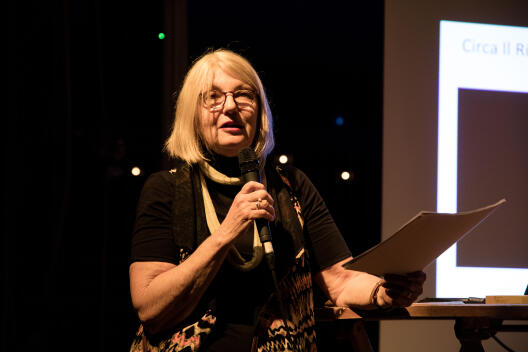
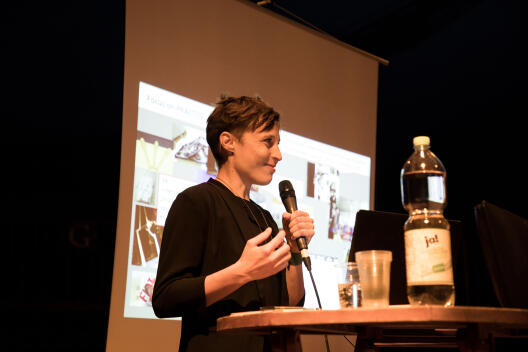
Among the many contemporary bodily practices, contemporary circus is particularly interesting because, at least in Italy, it still lacks codification, formalization and fixation of learning paths, specific aesthetic and performative standards and body techniques which characterize sports and ballet; it still relies extensively on creativity, improvisation, personal skills and the views and experiences of the practitioners.
This enables a high diversity and variability of notions of what an “ideal” circus body is, and how it is to be achieved, across sectors, institutions, approaches and individual practitioners engaging with contemporary circus practices. Moreover, the body in circus is present in a peculiar way, opposite to the “asepticised” and “abstract” body, shaped by broader social trends.
The interviews on which I based my PhD research included the question of whether circus practitioners may be recognized as such outside the circus space—while walking in the street, or drinking coffee in a bar, for instance. The responses pointed to elements of style and attitude, and highlighted different “typologies” of circus people, which were related to environment, age and other subcultural references. The expressive, symbolic and distinctive function of style—in its components of image, argot and demeanour —was thus reasserted in the community of circus practice. Style as a “focal concern” helps practitioners to orient themselves and establish subcultural, internal and external boundaries.
However, despite the predominant style of the hippie circus person, circus practice mostly remains a “secret” that only well-trained eyes can decipher. Thus, the marks left by circus practice were searched by the respondents more in depth than clothing or hairstyle, on the skin (in the form of calluses, bruises, scars), muscle shape and size, or deeper still, in ways of interacting, seeing the world and feeling, such as a communitarian spirit and “family-like” environment, a kind of “craziness” and anarchy which doesn’t exist in competitive sports, and a higher sensitivity. In this paper I will focus on how circus practitioners draw cultural spaces and boundaries through the embodiment and transmission of a specific knowledge and expertise, which in circus is still mainly tacit and bodily, and the reflexive construction of an adequate “circus self” through body, emotion and authenticity work.
Ilaria Bessone is currently completing a PhD in sociology and methodology of social research at the Graduate School of the Social and Political Sciences at the University of Milan and Turin in Italy. Bessone’s research explores the contemporary Italian circus field and community of practice, and her interests draw on years of circus practice as a performer, teacher and researcher in Italy and abroad. She is currently the coordinator of the research program AltroCirco, a national project for the development of a social circus in Italy.
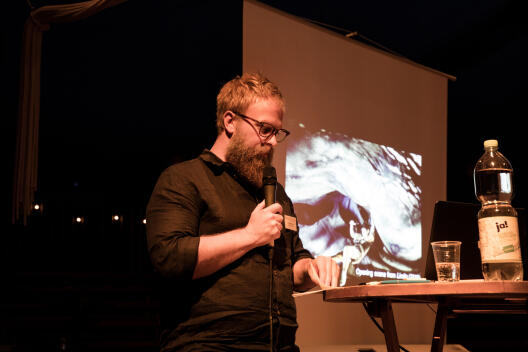
In 2015 the number of displaced people in the world reached an all-time high. As more than 65 million people were forced away from their homes and refugees were drowning in the Mediterranean Sea in an effort to reach safety, nations around the world began closing their borders.
Circus has a long tradition of celebrating diversity—mixing nationalities as well as cultural expressions—in the acts and its aesthetics. Throughout history traveling circuses have defied borders and limits both in the geo-political world and in their acts. In Sweden the leading circus company, Cirkus Cirkör, is engaged in social matters and uses circus as a tool to break boundaries. In 2015 Cirkus Cirkör celebrated its twentieth anniversary with the show Borders, which dealt with the current refugee situation in the world. With the use of strong imageries of oppression, combined with spectacular acts, they evoked mixed emotions of celebration and distress in the audience. In 2016 the following show Limits further investigated circus as an arena for a public discussion of boundaries and the situation in the world. Cirkus Cirkör uses circus to engage and inform audiences of the ongoing humanitarian crisis, relating it to darker times of history and showing that both borders and limits are human constructions—another world is indeed possible. In view of these shows, I place myself in the audience and analyze the use of the body, the acts and the stage and how the boundaries in the world are challenged.
Jonas Eklund has been a doctoral candidate since 2013 in theatre studies at the Department of Culture and Aesthetics at Stockholm University. He is currently writing his dissertation on the audience’s reactions to the body on stage in burlesque, circus and freak shows using aspects of phenomenology as a theoretical approach. He obtained an MA in theatre studies from Stockholm University in 2012, in which he wrote his thesis on audience reactions to Nils Poppe and his comical acting, analyzed through a phenomenological point of view. He has taught classes on Swedish popular theatre during the 20th century at Stockholm University and on phenomenology at DOCH (School of Dance and Circus).
Recent years have seen both the growth of “African” circus as a unique niche within the broader global economy of spectacle, as well as the rise of Ethiopian circus performers working as independent players within an increasingly international circus industry. This paper explores the relationship between the agent and the artist in the practice of constructing innovative and cultural “African” circus bodies that appeal to a global market. The creation of circus performances involves intimate and innovative collaborations between circus performers and the “agents” they work with, including individuals, proprietors, agencies, companies and local and/or foreign governments. In fact, in a global world, a circus performer is dependent upon these mediators as essential mobilizers in the act of building a successful international career. In the case of Ethiopian circus performers who are attempting to build better lives for themselves and their families through working hard with their bodies and increasing their own market value and mobility in the corporeal economy of circus, the stakes of the collaboration between artist and agent take on a particularly cultural tone.
This paper is based on data collected during 12 months of multi-sited fieldwork through six different countries in which I tracked the movements of a troupe of six Ethiopian circus performers as they trained in China on an acrobatics cultural exchange and subsequently performed in an “African” themed circus production in Europe. I examine how the troupe's various on-the-ground collaborations with agents innovated and developed their acts into a culturally symbolic so-called “African” style that was highly marketable in Europe. I further consider how one particular key agent—a former circus performer from Zimbabwe—was emblematic of what Nikolas Rose calls an expert of subjectivity; an authority on the cultural micropolitics of “African” circus who helped the troupe creatively channel their extreme embodied habituses into a cultural product that they could truly call “their own”.
Dr. Jessica Kendall holds a PhD in social anthropology from SOAS (University of London). She has conducted extensive multi-sited research in China, Europe and Ethiopia, focusing on how circus performers strategize in the process of building internationally successful careers. She has displayed (Brunei Gallery, London) and published her photographs in books (Wiley-Blackwell), Journals (JRAI) and online (BBC). Kendall has also toured for several years in the circus industry as a manager working within the area of talent and production.
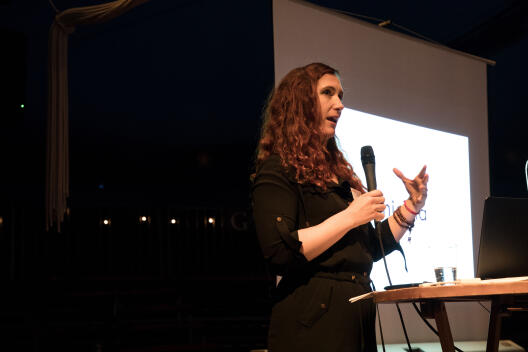
There is a space of magic and chaos, upside down. As an ancient character of the Italian commedia dell’arte, Harlequin is distinguished by the quality of a never-ending role-play connecting him to the universe. Similar to the joker in a game of cards, Harlequin changes his function and how he acts, his energy lies in the friction between antithetic poles. Inspired by the idea of Harlequin, the portrait project Clowns documents the photographer Franzi Kreis’ encounters with people who combine clowning, circus, dance, surrealistic bodies, drag, or shamanism to enter the spaces that are in-between. The ongoing traveling exhibition has been shown at different venues including festivals, such as La Strada Graz (AT 2015/16), Festival d’Aurillac (FR 2016), Festival Novog Cirkusa, Zagreb (HR 2016) or Cirkopolis Festival, Prague (CZ 2017).
The portrait project Clowns documents the photographer Franzi Kreis’ encounters with people who combine clowning, circus, dance, surrealistic bodies, drag or shamanism to enter the spaces that are in-between. The ongoing traveling exhibition has been shown at different venues including festivals, such as La Strada Graz (AT 2015/16), Festival d’Aurillac (FR 2016), Festival Novog Cirkusa, Zagreb (HR 2016) or Cirkopolis Festival, Prague (CZ 2017).
Franzi Kreis works as a freelance artist and focuses on photographic portraits and videography in the field of performing arts, such as theatre, dance and contemporary circus. She completed her studies in theatre, film and media at the University of Vienna. Since 2012 she has been the assistant of the photographer and filmmaker Lukas Beck. Her work is represented in press and exhibitions, among others Der Spiegel (DE, 2015), Dschungel Wien - Museumsquartier (AT, 2015), Kosmostheater Wien (AT, 2016) or Freiraum Übersee (DE, 2017). Kreis has been commissioned by various international festivals and companies, such as ImPulsTanz - Vienna International Dance Festival, New Plays From Europe (Wiesbaden), La Strada Graz and the Vienna Boys Choir.
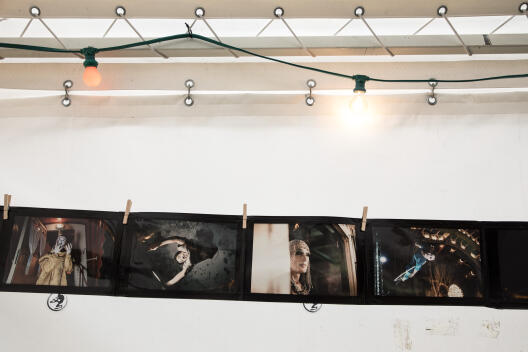
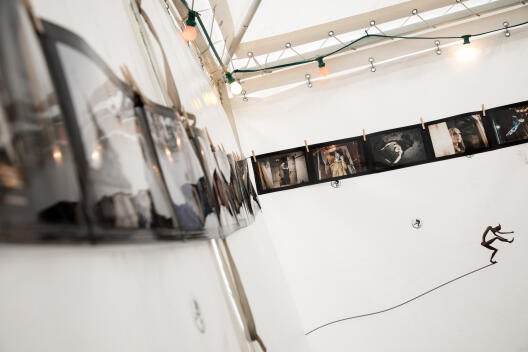
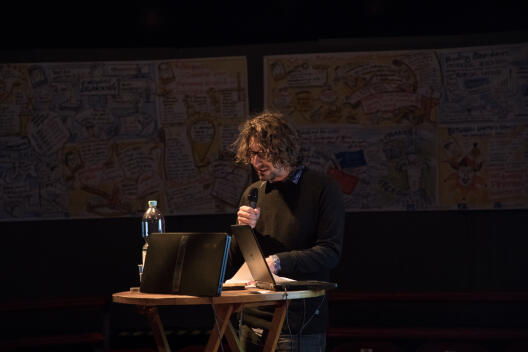
For my presentation, I start with the premise that a neutral space as such does not exist. Space is always invested with power. Power relation can work in alliances, alongside each other and/or in opposition to each other. As a practitioner and scholar working and studying in North America, I am especially interested in the questions of complicity of modern circus within the colonial project. Rather than thinking of circus only as an innocent and poetic art form, I contemplate how circus practices express a grammar of place which the native scholar Mishuana Goeman describes as “settler colonialism”.
Drawing on Michel De Certeau, Goeman suggests that one must address the power relations in a mapping process of space. It gives “authority to some grammars, while denying, erasing and overlaying others.” A settler grammar of place assumes a space which is so to speak “empty”. Space is a blank surface, which must be surveyed, controlled, exploited; it is something to earn profits from. Through settler grammar space becomes a place through repetitive practices of everyday life that gives settler places meaning and structure . This practice is ideologically marked. A settler colonial logic must disavow a native grammar of place, which is premised on a deeper temporal and spatial sense of belonging; it must render the native presence invisible in order to instantiate and legitimize its logic, its structure, its grammar. Further, a “settler grammar assembles an absence of violence in ongoing Native-white relations.” Can we think of circus as an artistic endeavor which attempts to dominate space, both vertically and horizontally, and thus serves as a critical instantiation of the colonial settler grammar, which renders every space as a place to be conquered, to be owned or to be marked? How can circus engage self-critically with its complicated relationship to space and place? What are the latent acts of violence produced by modern circus practices? How can it turn spatial power relation upside down?
Ante Ursić’s interest as an academic researcher in the domain of circus lies in acts, events, shows and performances that offer a unique set of possibilities to widen our perception of circus, what and who it encompasses and its politics. Currently, he is investigating the animal/human relationship in traditional and contemporary circus. Most of Ante’s professional career is as a performer and choreographer the field of contemporary circus. Ante visited the circus school in Brussels (ESAC) and Berlin (Die Etage) and Moscow. He holds a BA with Distinction in contemporary dance, context and choreography from the University of Arts, Berlin and a distinguished MA in Performance Studies from New York University. At the moment he is pursuing his PhD in performance studies at UC Davis. He has successfully produced projects on his own and in collaboration, which have been recognized and honored with various awards, such as the Gold Medal at the Festival SOLyCIRCO, the Special Prize at the Cirque du Demain and the Propone Prize at the Theaterfestival Vailladolid (the latter for Oko Sokolo in collaboration with Claudia Schnürer). He collaborated with Julia Christ on the piece Bambula. Ante also performed with companies such as Cirque du Soleil, Circus Roncalli and Tiger Lillies Circus.
“It is better to do nothing than to contribute to the invention of formal ways of rendering visible that which Empire already recognises as existent.”
“If we understand the political in the sense of the polis, its end or raison d’être would be to establish and keep in existence a space where freedom as virtuosity can appear.”
In what ways can space be a matter of concern for contemporary circus performance? In this paper, I deal with the space of free expression: today, circus’ most hotly contested terrain. This material and discursive space is defined and produced by the contemporary circus apparatus (in the Foucauldian sense), understood as the unity of our institutions, our workspaces, our techniques and our conventions. Does this apparatus effectively open a space of freedom? And if not, how might we constitute the circus apparatus differently?
As one way to begin answering this question, I attempt here to conceive of technical research in circus as a poetic and a political practice: poetic in the Greek sense of constructive, and political in the specifically Arendtian sense. For Hannah Arendt, politics is the performative process by which spaces of free expression and virtuosic expressions of freedom co-constitute one another. In this framework, the political ensures the possibility of action free from material necessity. I understand Heidegger’s Gestell (technological “enframing”) as the opposite process—antipolitical—whereby bodies and objects are divested of their freedom and made to serve as resources or commodities. Seen through this lens, circus practice has political potential inasmuch as we can radically differentiate technique from technology, the space of free expression from mere geometric spatialization.
If the very notion of political circus practice seems strange, this can only be due to the largely antipolitical and antipoetic nature of today’s circus field. I contend that contemporary circus channels, disciplines and delimits the possibilities of the body, appropriating and instrumentalizing its transformability. Circus artists are proud of their “signature tricks”, which function as their calling-cards and proof of their uniqueness, but on some level these tricks are all the same, insofar as they all used as markers of the body’s commodity-value, and all produce more or less the same feeling in a spectator: awe. As such, circus today is perhaps the most literal example of the way post-Fordist capitalism seizes and commodifies self-differing. It also presents a formidable set of technical tools for resisting that seizure: “possessed by the power of the radical outside, [the body of technical practice] discovers a breathtaking power ‘inside’ itself, which makes it step beyond the limits of ‘human’”.
If circus is to emerge as an important artistic voice in the 21st century, it is essential that we reclaim circus technique as a space of free expression. Space is not the nothingness of vacuum but rather pure potentiality as such, and the re-injection of space in circus practice is predicated on what Boyan Manchev calls disorganization: the jumbling-up of functions, the blurring of forms and the re-appropriation of the body’s contingency. This paper explores both the theoretical groundwork I’ve begun to outline above and practical examples of disorganizing exercises, drawn from aerial and acrobatic practice. I conclude that the very notion of the “trick” must shift if circus is to be taken seriously as an expressive practice.
Sebastian Kann is a German-American circus artist, researcher, teacher and performance dramaturg. After receiving his diploma in circus practice from ENC (Montréal) in 2009, he began to work in Europe as a circus artist, performing both short numbers in cabarets and longer-form devised work. In 2016, Sebastian received his MA in theatre studies from Utrecht University, graduating with a thesis dealing with circus technique and its latent formal potentiality. Since graduating he has been active giving lectures and dramaturgy workshops at circus festivals and residency spaces in Germany, the Netherlands and Spain. He is also working as a dramaturg on various projects in circus and dance, mostly notably with choreographer Vera Tussing. Sebastian’s current research interests include embodiment, imagination and political resistance through performance, and his first academic article will be published in Danswetenschap in Nederland in May 2017. He will receive his RMA degree from Utrecht University in media, art and performance studies in 2018.

In February 2015, I conducted ethnographic research at the 5th edition of the Festival de Circo of Mazunte, one of the most important circus gatherings in Mexico. Mazunte is a small town next to the beach on the Pacific coast in Oaxaca, Mexico. Almost no human population existed in Mazunte until the 1970s, when a small community of sea turtle hunters settled there. By the 1990s, the Mexican government banned the trade of turtle. At the edge of economic collapse, Mazunte’s local community was assisted by environmental groups to transform the village into an eco-friendly tourist centre. As part of these initiatives, annual events and cultural gatherings were organized to attract tourism, including the Spring Equinox Festival, an international dance and jazz festival and the Festival de Circo en Mazunte.
For the duration of the festival, Mazunte was transformed into a living circus town. During the day, approximately five-hundred people—including circus professionals, amateurs and circus aficionados—took part in more than thirty circus workshops and a couple of collective-creation projects and daily public performances. My paper explores the ways in which the circus festival transformed Mazunte into a contact zone, a concept coined by Mary Louise Pratt to refer to “social spaces where cultures meet, clash, and grapple with each other, often in contexts of highly asymmetrical power.” As a contact zone, I describe the liminal spaces opened by the circus festival that mobilize transnational exchanges and intense encounters between the local community of Mazunte, foreign professional circus artists, Mexican street-performers, yogis, backpackers and members of distinct sub-cultural troupes. By Looking at these social, cultural and artistic encounters and reflecting on the tensions and escalating conflicts that arose among them, I argue for the potency of circus festivals to transfigure the spatiotemporal configuration of localities and, particularly in Mazunte, expose the asymmetrical power dynamics of post-colonial relations, structural racism and class inequality in Mexico.
Roy Gomez Cruz is a PhD candidate in performance studies at Northwestern University. He holds an MA in communication from ITESO University in Guadalajara, Mexico. His research explores cross-border exchanges sheltered within a major growth of contemporary circus across Canada, the United States and Mexico. He examines the political-economic reorganization of circus economies under competing forms of transnationalism. His investigation elucidates the contradictory meanings that “intimate circus” takes as embodied within local and global circus economies at strikingly different developmental phases. He approaches ethnographically an interrelated network of circus schools, festivals, companies and independent circus artists to reveal how minority circus groups mobilize race, gender and sexuality as counteracting tactics to the “transnationalism from above” spearheaded by Cirque du Soleil at the aftermath of its corporate circus reinvention. In doing so, his research highlights the centrality of the body as a performative site of transversal, multidirectional and alternatives forms of labor shaping contemporary circus economies in North America.
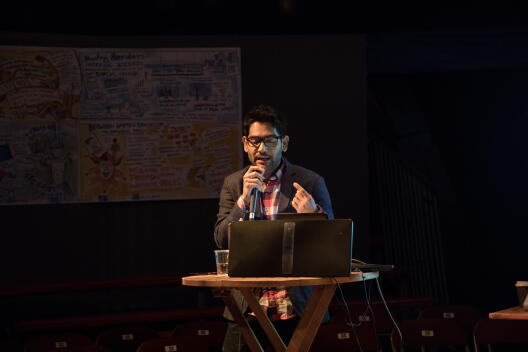
An excerpt from my doctoral research into Australian contemporary circus, my paper explores how contemporary circus as an artform, and particular acts of circus, transform or change the social coding of the spaces they occupy. To gain an insight into the Australian milieu, I will be sharing two short case studies from the Australian sector: Gravity and Other Myths and The Garden of Unearthly Delights (Adelaide Fringe).
Working with ideas of creative chaos and an argument that circus needs to foster a chaotic space for its chaotic creative process, my research investigates the kinds of spaces in which circus takes place; how the artists using those spaces interact with each other as well as with the space itself; how spatiality contributes to performance and how audiences react to/in different spaces.
Using Deleuze and Guattari’s concept of the rhizome, Doreen Massey’s For Space and Elizabeth Grosz’s Space, Time and Perversion, I will discuss how the performance space operates smoothly enough to create the illusion of disorder. And I ask how circus artists also design the uses of space so that amid the chaos of color and movement, the same audience can experience moments of breath-holding stillness, as a single act or artist enters the apparently completely smooth space of life and death risk—such as flying through the air, or hanging by the smallest of connections, or balancing on a tightrope. That apparently smooth space is, of course, the most striated, or highly ordered, of all circus spaces in terms of highly disciplined skills, endless rehearsal, safety considerations, calculated risks—striations that remain invisible to audiences. Through these case studies I aim to begin to uncover how the spatiality of Australian contemporary circus has contributed to Australia becoming a leader and innovator within the international contemporary circus milieu.
Kristy Seymour is a circus artist and emerging scholar with over 18 years experience in the Australian circus sector as a performer, trainer, artistic director and administrator. She has worked extensively in the youth circus sector and has collaborated with Strut n Fret Production House, Brisbane Powerhouse, Creative Generations, Woodford Folk Festival, Brisbane Festival and Adelaide Fringe Festival. In 2012 Kristy completed her honours thesis “How circus training can enhance the well-being of children with autism and their families”. Her research has been published in New Theatre Quarterly and a forth-coming publication in Performance Matters will be released in May 2018. Kristy has her own circus school, Circus Stars, solely dedicated to children with autism, which was the topic of her recent TEDx talk (June 2017). Kristy is currently completing her doctoral research titled “Bodies, Temporality and Spatiality in Australian Contemporary Circus” at Griffith University Gold Coast.
